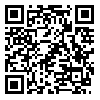Volume 1, Issue 2 (Summer 2015)
Caspian J Neurol Sci 2015, 1(2): 15-19 |
Back to browse issues page
1- Department of Neurology, Poursina Hospital, Guilan University of Medical Sciences, Rasht, Iran
2- Department of Neurology, Poursina Hospital, Guilan University of Medical Sciences, Rasht, Iran ; yasermoadabi@yahoo.com
2- Department of Neurology, Poursina Hospital, Guilan University of Medical Sciences, Rasht, Iran ; yasermoadabi@yahoo.com
Abstract: (4459 Views)
Background: Temporal variation of stroke onset is suggested in some studies contained somewhat varieties. It is proposed that some predisposing changes occur in some ascertained times consequently resulted in stroke occurrence in some special times.
Objective: To determine the circadian and circaseptan variation of stroke onset.
Materials and Methods: This cross sectional study was conducted from March 2012 to February 2013 in an academic hospital in the North of Iran. All patients with acute onset of neurological symptoms were enrolled in the study after being diagnosed as a stroke patient. The diagnosis was made by a neurologist using brain imaging. Age, gender, history of diabetes and hypertension, time and date of stroke onset were recorded for all patients. The data were analysed using Chi-square test in SPSS software version19.
Results: A total of eight hundred sixty-nine patients with mean age of 67.5±12.4 years (55.6% women 44.4% men) were admitted during one year study. Eighty-five percent of stroke cases were ischemic in nature and the others were hemorrhagic type. Distribution of cases during a day was not uniform (p < 0.0001). The peak of stroke onset occurred in the mornings (7-9 a.m.) followed by a second peak in the evenings (7-9 p.m.). In addition, the distribution of cases during the week was also not uniform (p < 0.016).
Conclusion: Stroke occurrence has a diurnal variation probably resulted from circadian physiologic changes. Although there is a circaseptan variation in the times of stroke record, it seemingly isn’t related to physiologic changes.
Type of Study: Research |
Subject:
Special
Received: 2015/07/9 | Accepted: 2015/07/9 | Published: 2015/07/9
Received: 2015/07/9 | Accepted: 2015/07/9 | Published: 2015/07/9
| Rights and permissions | |
 | This work is licensed under a Creative Commons Attribution-NonCommercial 4.0 International License. |



